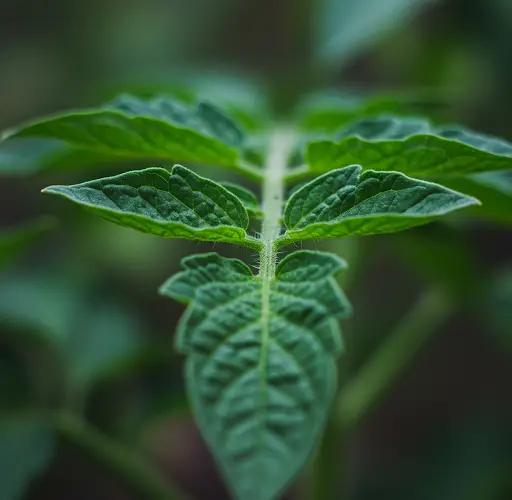How to Naturally Restore Color to Tomato Leaves
Tomatoes are one of the most beloved crops in home gardens, but they can be surprisingly sensitive to environmental changes and nutrient imbalances. A common issue that many gardeners face is the discoloration of tomato leaves. If you’ve ever noticed your tomato leaves turning pale green, yellow, or even purple, you’re not alone.
Leaf discoloration can be alarming, but the good news is that it’s often reversible—especially when addressed early with proper care and nutrition. In this article, you’ll discover a simple, natural solution that helps bring vibrant green color back to your tomato plants while boosting their overall health and resilience.
Understanding Leaf Discoloration
When tomato leaves lose their lush green color, it’s typically a sign that something is off within the plant. Here are some common causes:
-
Nutrient Deficiencies: Tomatoes require a balanced supply of essential nutrients, especially nitrogen, magnesium, iron, and phosphorus. A lack of these nutrients can lead to yellowing, purpling, or general paleness in the leaves.
-
Environmental Stress: Fluctuations in temperature, inadequate light, or poor watering practices can stress the plant and manifest through discolored leaves.
-
Improper Watering: Overwatering can lead to root rot, while underwatering can stress the plant—both conditions may show up in the leaf color.
-
Diseases or Pests: Infections and infestations may also contribute to leaf damage and discoloration.
Instead of immediately turning to chemical fertilizers or synthetic treatments, consider a natural, effective method to restore your plants’ health—and their rich green hue.
A Natural Solution: Yeast Elixir for Tomato Plants
One of the best-kept secrets for revitalizing tomato leaves lies in a surprising yet simple ingredient: baker’s yeast. Yeast is a powerhouse of natural nutrients, especially B vitamins, amino acids, and minerals—all vital for plant growth and development.
When prepared and applied correctly, a yeast-based solution can help restore leaf color and significantly improve plant health. Here’s why yeast works so well:
-
Rich in B Vitamins: These vitamins boost root strength and promote better nutrient uptake from the soil.
-
Amino Acids and Minerals: These essential elements support overall plant resilience, making tomatoes more resistant to diseases and pests.
-
Enhances Soil Fertility: Yeast helps break down organic matter in the soil, enriching its structure and increasing its fertility.
-
Improves Stress Tolerance: Plants treated with yeast are often more adaptable to environmental stress, such as drought or temperature fluctuations.
How to Prepare the Yeast Solution
Making this natural leaf-reviving treatment is quick and cost-effective. Here’s what you’ll need:
Ingredients:
-
1 tablespoon of dry yeast
-
1 liter of lukewarm water
Instructions:
-
Mix the Solution: Add one tablespoon of dry yeast to one liter of lukewarm water. Stir thoroughly until the yeast is fully dissolved.
-
Activate the Yeast: Let the mixture sit for 15 to 20 minutes. This resting period allows the yeast to activate and begin fermenting slightly, enhancing its effectiveness.
-
Apply to Plants: Once the solution is ready, use it to water your tomato plants at the base. Focus on the soil around the roots rather than spraying the leaves.
-
Frequency of Use: For best results, apply the yeast solution once every two weeks. This regular feeding schedule ensures the plants receive a steady supply of nutrients without overwhelming the soil.
Benefits You’ll Notice
After using the yeast solution consistently, you’ll likely observe several improvements:
-
Leaf Color Restoration: Leaves should regain their natural green color as the plant receives the nutrients it needs to produce chlorophyll.
-
Stronger Root Systems: The B vitamins in yeast promote healthier and more extensive root development.
-
Increased Disease Resistance: With a fortified immune system, plants are better equipped to fend off common diseases.
-
Improved Growth and Yield: Healthy leaves mean more efficient photosynthesis, leading to better flowering and fruiting over time.
Additional Tips for Healthy Tomato Plants
While the yeast solution is highly effective, it should be part of a broader care routine. Consider the following practices:
-
Rotate Crops: Avoid planting tomatoes in the same spot every year to reduce the risk of soil-borne diseases.
-
Use Mulch: Mulching helps retain moisture, regulate temperature, and prevent the spread of disease.
-
Test Soil: Periodically check your soil’s pH and nutrient levels to ensure it’s suitable for tomatoes.
-
Proper Spacing: Allow enough space between plants for air circulation to prevent fungal infections.
Conclusion
Discolored tomato leaves are a clear signal that your plants need help, but there’s no need to panic or rush to synthetic solutions. By using a simple, natural yeast solution, you can restore the health and beauty of your tomato plants while embracing sustainable gardening practices.
This organic method is not only easy to implement but also cost-effective and environmentally friendly. Whether you’re a seasoned gardener or just starting out, incorporating this trick into your plant care routine can lead to greener leaves, stronger plants, and a more bountiful harvest.



